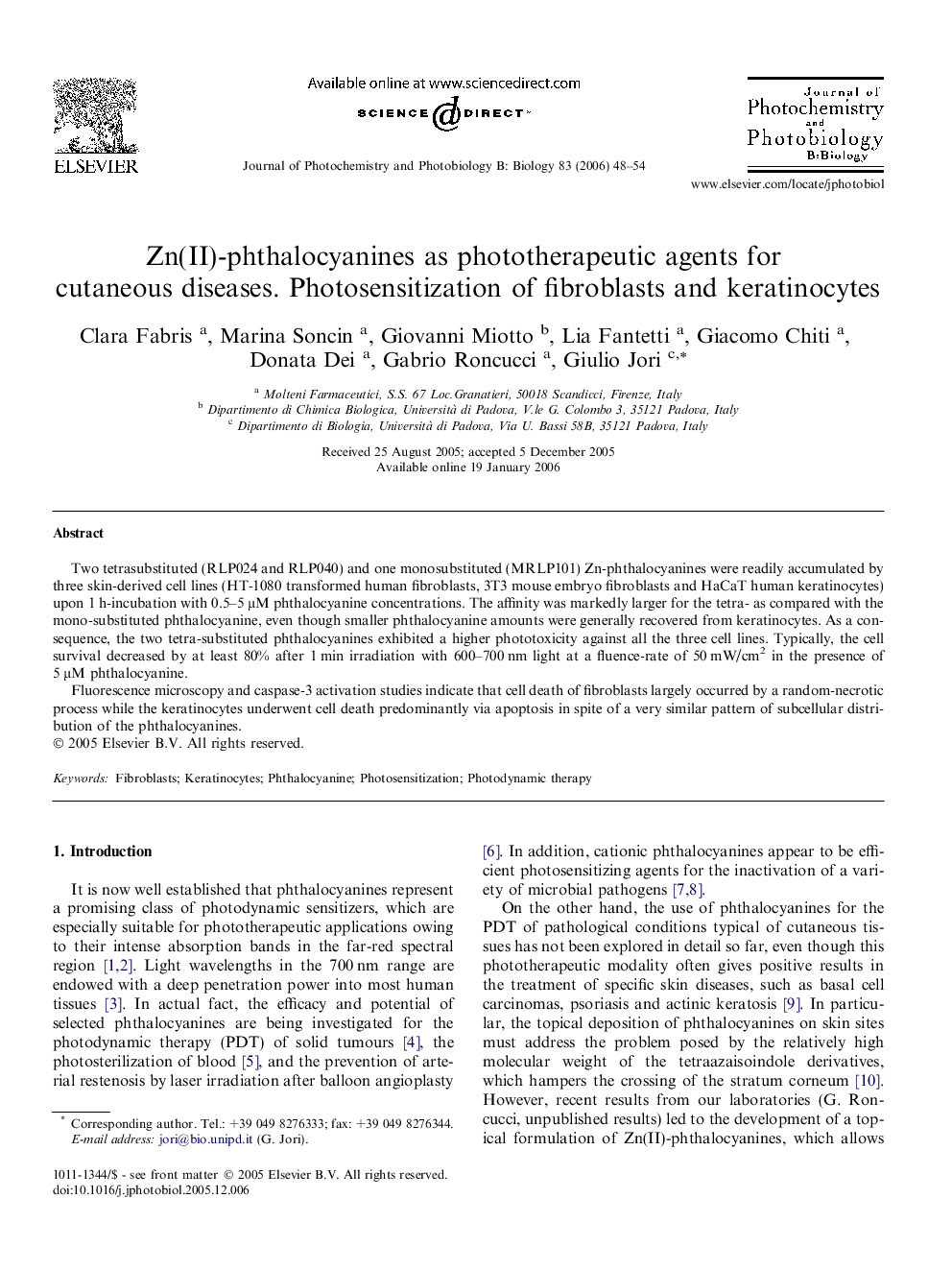| Article ID | Journal | Published Year | Pages | File Type |
|---|---|---|---|---|
| 30730 | Journal of Photochemistry and Photobiology B: Biology | 2006 | 7 Pages |
Two tetrasubstituted (RLP024 and RLP040) and one monosubstituted (MRLP101) Zn-phthalocyanines were readily accumulated by three skin-derived cell lines (HT-1080 transformed human fibroblasts, 3T3 mouse embryo fibroblasts and HaCaT human keratinocytes) upon 1 h-incubation with 0.5–5 μM phthalocyanine concentrations. The affinity was markedly larger for the tetra- as compared with the mono-substituted phthalocyanine, even though smaller phthalocyanine amounts were generally recovered from keratinocytes. As a consequence, the two tetra-substituted phthalocyanines exhibited a higher phototoxicity against all the three cell lines. Typically, the cell survival decreased by at least 80% after 1 min irradiation with 600–700 nm light at a fluence-rate of 50 mW/cm2 in the presence of 5 μM phthalocyanine.Fluorescence microscopy and caspase-3 activation studies indicate that cell death of fibroblasts largely occurred by a random-necrotic process while the keratinocytes underwent cell death predominantly via apoptosis in spite of a very similar pattern of subcellular distribution of the phthalocyanines.
